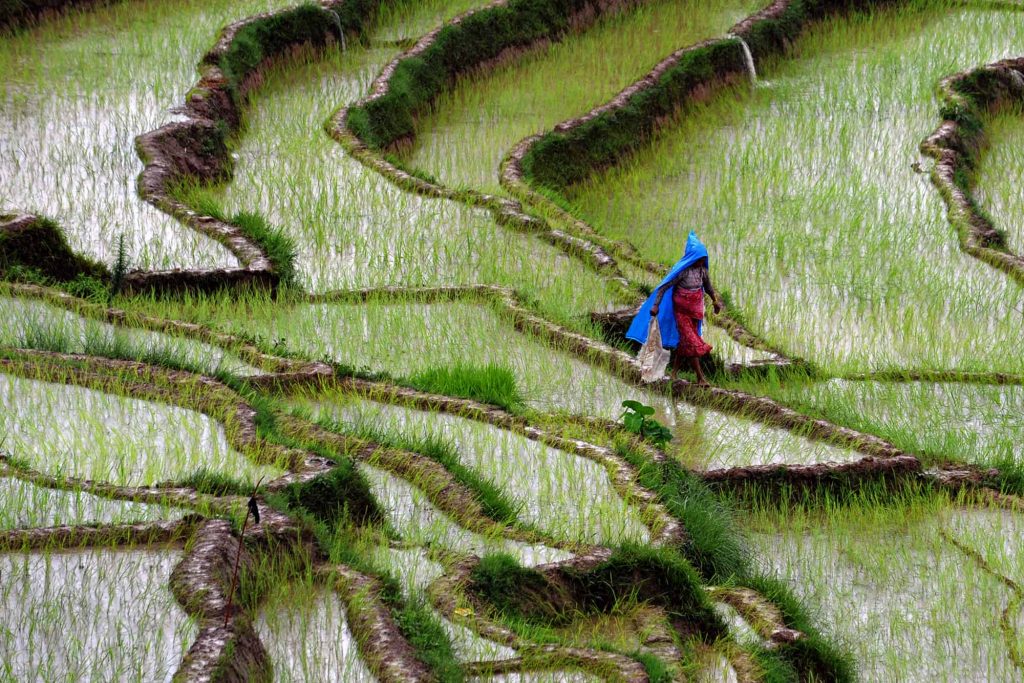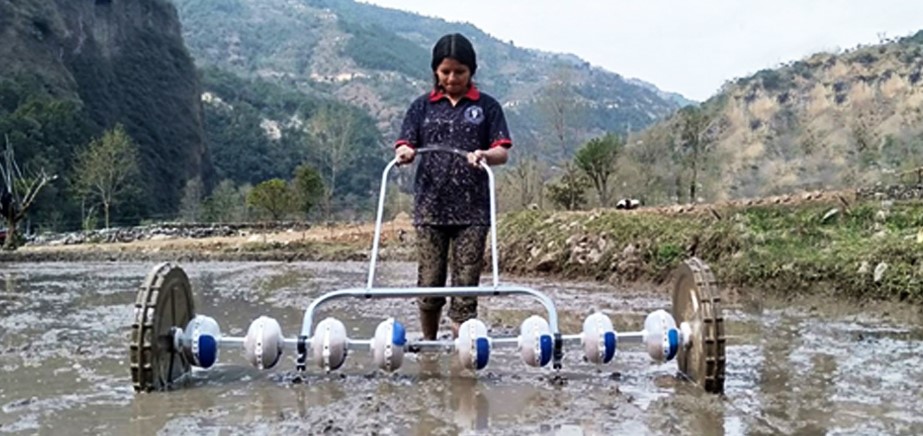Enterprising agriculture in Nepal: Essential yet challenging thanks to sluggish government


Before the 1990s, Nepal’s main economic activity was agriculture. From mid of the 1990s, and more intensively from the 2000s, the livelihood options changed unexpectedly. Most of the educated youth migrated abroad for better employment opportunities than engaging in agriculture in Nepal.
The influx of remittance sent by migrant labourers vitalised the urban economy creating additional employment opportunities. As a result, most of the rural population migrated to urban areas.
However, no alternative appears as sustainable as agriculture in Nepal, requiring stakeholders to pay attention to enterprising the sector. Apparently, enterprising agriculture involves a lot of challenges but it also offers some opportunities. Hence, it is high time the stakeholders addressed these challenges and leveraged opportunities to prioritise enterprising agriculture in Nepal.
From farm to the market
With the growing migration, intensive labour that was dependent on a traditional agriculture production system started to face a severe labour deficit. On the other hand, people who became self-employed in subsistence production systems changed into wage earners and self-employed in the off-farm sector.
This means the livelihood system changed from substance to market-based. Similarly, consumption culture also radically changed with rapidly changing livelihood patterns. In the past, the numbers of producers and consumers were almost the same, thus the market’s role was less important. But, gradually population migration dynamics changed the scenario by moving the consumers to cities, far away from the production sites. Meanwhile, the market has been the means to connect the producers and consumers indirectly.
In recent decades, livelihood and consumption systems rapidly changed following capitalistic impulse whilst the production system remained in a stagnant situation; neither continued subsistence nor switched to commercial. Significant gaps have been seen among production, consumption and livelihood systems in the latest three decades.

In order to bring a balance among these three systems, it is critical to rethink the production system. The existing subsistence system needs to be transformed into a commercial system so that a small number of producers can feed a huge number of people whose livelihoods are outside agriculture in Nepal.
Therefore, enterprising agriculture in Nepal is the only way to improve our agriculture sector and feed the ever-growing population.
Challenges in enterprising agriculture in Nepal
There are some basic conditions for any sector to grow as an enterprise. The most important conditions are that production should be at a mass scale; the product should go to market for sale; the margin is mandatory in product selling, and some part of the margin should be reinvested for reproduction.
Does agriculture in Nepal meet these basic conditions and graduate as an enterprise from subsistence? The existing agriculture system has challenges, particularly for market-led mass production. For mass production, producers should have access to a huge plot of land. There are some policy barriers in owing such areas by producer families for agriculture purposes. A company other than agriculture purpose has no limitation to own land. However, for the agriculture sector, there is a limitation. This is a key barrier to enterprising agriculture in Nepal despite having a lot of arable land unused.
Other fundamental conditions for agriculture enterprising are round-year irrigation facility in production land, timely availability of improved production inputs, tools and machinery, post-harvest handling facilities and a smooth market system developed at production as well as consumption site.
These basic conditions improve time, labour and input productivity, thereby support in enterprising agriculture in Nepal. But, Nepal apparently lacks these conditions.
Sluggish government efforts
Though the government has taken a few initiatives towards enterprising agriculture in Nepal recently, it is too slow in comparison to rapidly change consumption and livelihood patterns. Ironically, the way the government has taken initiatives for the commercialisation of agriculture in Nepal seems to be moving in the wrong direction.
The commercialisation should build on the already available premises. For example, machinery should be developed that fits in the local context, building on the already developed blacksmithing and agro-machinery. But today, blacksmithing is abandoned and agro-machinery factories working in the past are being closed. A good amount of agro-machinery is imported in the name of commercialisation of agriculture in Nepal. But, no spare parts and skilled human resources are available on the production site.
A similar case is there in the seed system. In the past, we had a robust local seed system. Instead of advancing the same system towards commercialisation, our programmes focused on imported seeds and associated production inputs. Our viable seed system developed in past has almost vanished. The bitter reality is that an import-dependent production system usually encounters the challenges of not getting appropriate production inputs in time as per the local needs.

Overall, the reality in agriculture in Nepal is that agriculture-based livelihood cannot compete with off-farm-based livelihood in absence of government protection.
Actions to take
Agriculture in Nepal requires radical transformative actions rather than small improvements. Changing the production system from subsistence to commercialisation is not possible unless the government takes transformative action.
This transformative action should start by identifying commodity-based production pockets, consolidating land as per production block and mechanised production block in order to increase time, input and labour productivity.
In doing so, some of the crops grown in the existing subsistence system may not be lucrative. We should not shy away to be dependent on other countries for those commodities whereas we might be exporters of some other commodities. We can explore and exploit our geographical uniqueness in production zoning and can take benefit of comparative advantage in market-led production.
Currently, agriculture traders are required to invest more in collecting scattered production because producers are not specialised in production. Further, no road and other physical infrastructures are developed for market-led production. This is why agriculture traders feel comfort to import commodities from distant advanced markets rather than collecting from the nearby countryside. This should change.
The existing government agriculture extension system is too old as it was developed in the past to provide extension services to a huge number of smallholder farmers by a small number of technicians. But, now, the context has changed. The number of producers is reduced, and a small number of producers has to feed a greater number of consumers.
Thus, subsistence farming should change into an agricultural enterprise. Existing technicians trained to provide extension service are not fit for commercial production unless they are provided with new insights skills, opportunities, and technologies.
Agriculture enterprising experts should spend their time in the production zone rather than enjoying at federal and provincial levels, spending most of their time doing administrative work. In the same way, the university teaching system should produce human resources who are fit in agriculture in Nepal.
Source
Language of the news reported
Copyright © Source (mentioned above). All rights reserved. The Land Portal distributes materials without the copyright owner’s permission based on the “fair use” doctrine of copyright, meaning that we post news articles for non-commercial, informative purposes. If you are the owner of the article or report and would like it to be removed, please contact us at hello@landportal.info and we will remove the posting immediately.
Various news items related to land governance are posted on the Land Portal every day by the Land Portal users, from various sources, such as news organizations and other institutions and individuals, representing a diversity of positions on every topic. The copyright lies with the source of the article; the Land Portal Foundation does not have the legal right to edit or correct the article, nor does the Foundation endorse its content. To make corrections or ask for permission to republish or other authorized use of this material, please contact the copyright holder.
